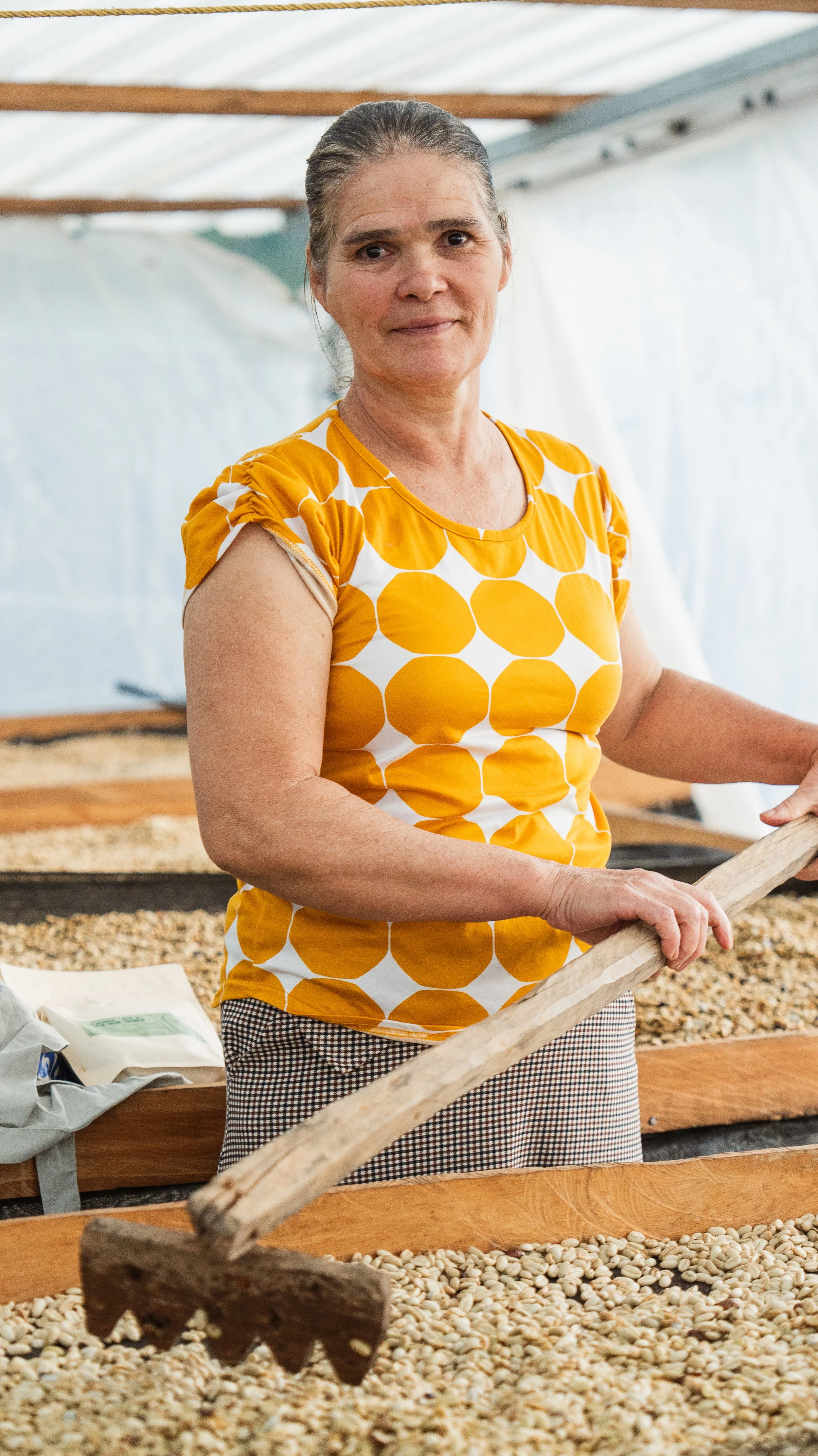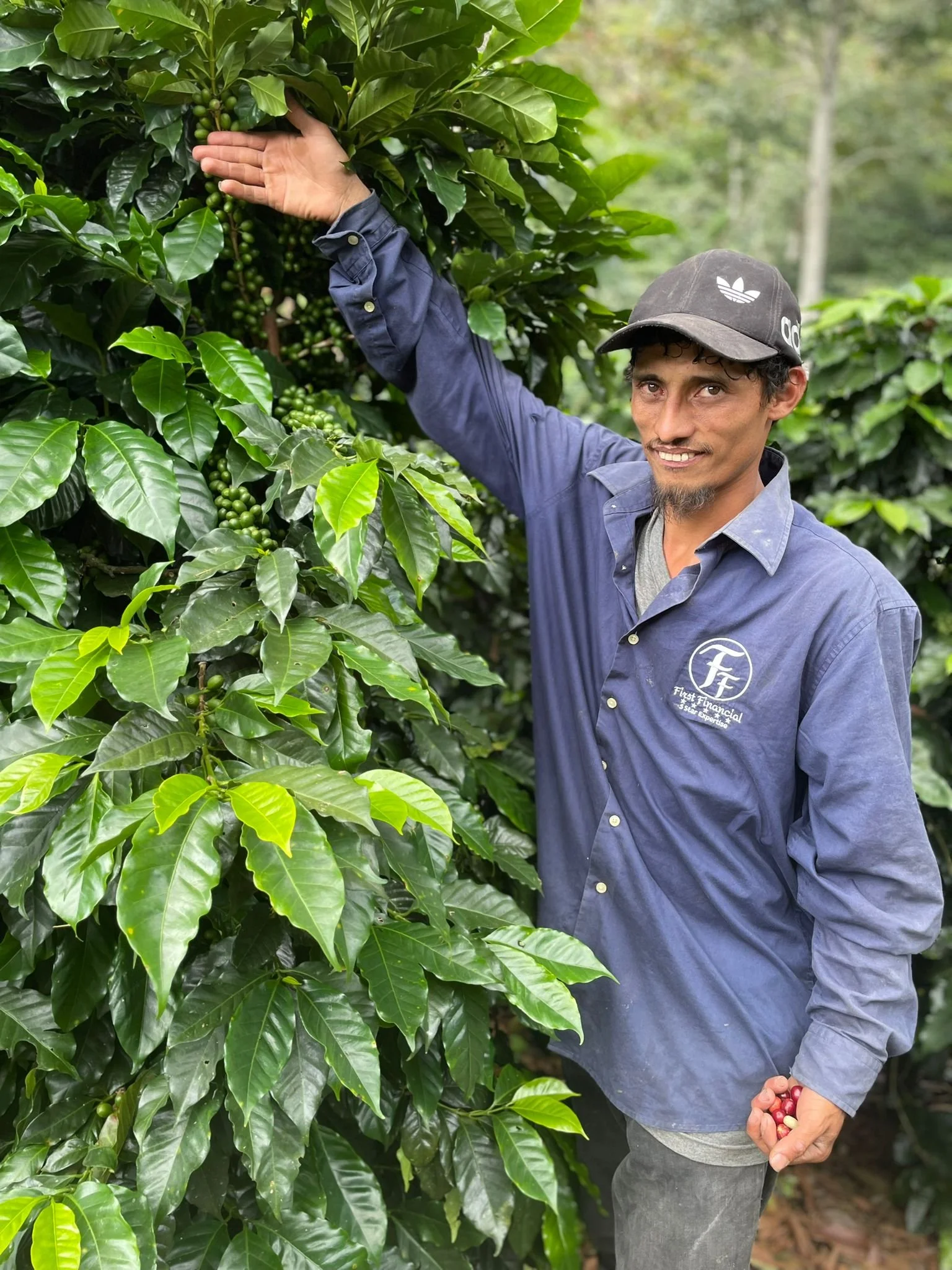What did you taste?
From the Importer:
Clementino Ramirez // PRODUCER
Image property of Semilla Coffee
This water-processed decaf lot is an exciting and limited offering from Semilla. We consistently strive to purchase as much coffee as possible from the communities we work with in Honduras.Therefore, sending specific lots to the decaf plant in Burnaby allows us to enhance our purchasing commitment and acquire coffees that may slightly exceed our standard criteria for selling as micro-lots. This process also includes some coffees that originally qualified as micro-lots but had a few excess pounds. As a result, we can still purchase coffee that may test slightly outside the ideal range for humidity or water activity at competitive prices. The benefit is that we’re able to provide fresh decaf coffee to our roaster partners as well. As it can be very difficult to find quality decaf, let alone fresh decaf, this Sueños Decaf lot ensures that a just price was paid to the producer and that you, as a roaster, have a traceable decaf made of high-quality, fresh coffee!
The Sueños Decaf consists of coffees from some of the members of the Sueños se Semilla project in Honduras. Since 2019, when our purchasing first began in the area, each of these producers has been involved in the effort to find an international market for their coffees, and thus a more sustainable price.
Our Approach to Sourcing In Honduras
We work specifically in a series of hamlets stretched along the Montecillos mountain range's peaks, which cross the La Paz and Comayagua departments. In these areas, the smallholder growers we buy from have been involved in coffee growing as a principal income source for years, if not generations.
Maria Caceras // PRODUCER
Image property of Semilla Coffee
Regardless of that, their main sales channel has been either with intermediaries who drive their dump trucks into their communities to buy cherries or, even worse, they have to undertake the day-long trip of packing their cherries down to the city by mule, hoping to find a buyer who will offer them a decent price. While this system of buying did at one time, many decades ago when costs of production and input costs were much lower, work well for producers, for the last two 15 years at least this type of sales channel has been largely exploitative, never allowing producers an opportunity to earn enough to re-invest in their farms and kept them at a distance from any meaningful connection with international buyers.
Many growers have explained that the prices they've (and continue to) receive in the conventional model are not high enough to generate profits. This is a common refrain heard in Honduras these days: coffee farming, at best, can generate enough money to pay the pickers and the input costs, but often fails to do even that. Given this situation, many producers face the difficult decision to sell their land, in part or in entirety, to survive. This reality has forced many to migrate to the dangerous major cities of Tegucigalpa and San Pedro Sula (the latter of which has held the dubious distinction of murder capital of the world) or to the United States. Indeed, Honduras’ rural farmer class in general has been under siege for decades now, as foreign direct investment from countries like Canada has poured into the country to use these lands for livestock production, sugar cane, bananas, and palm oil production. Much of this land dispossession has occurred in the fertile lower valleys and thus left only the remote higher altitude regions untouched, where 80% of smallholder farming takes place, with 50% of all farms being 5 hectares or less.
It’s no surprise, then, to hear from these smallholders how common it was for members of the community to migrate away to the city or the United States. Though it manifests in a more fragmented way, their experience of land loss or abandonment due to the vagaries of the coffee commodity structure has to be seen as a parallel pattern to the overt land dispossession that, for example, took homes and livelihoods from tens of thousands for the enrichment of a handful of wealthy palm oil farmers throughout the 1990s. The coffee commodity system thus feeds into the prevailing economic structure of Honduras, wherein the richest 10% of the population claim 37% of the national income while the poorest 40% claim only 10%.
Edis Aguilar // PRODUCER
Image property of Semilla Coffee
The hope with Semilla’s work in all of these communities is that we operate on a baseline of prices that are not only sustainable but highly profitable, such that these coffee growers see their investment in coffee quality as a viable and desirable way to make a living. As always, all of our pricing is decided in open conversation with the growers we work with, seeking to arrive at a consensus decision as opposed to offering a top-down price. Similarly, we set fixed prices across the community as we recognize that the effort, risk and commitment taken to process coffee as a microlot is the same, regardless of whether it’s an 86 or an 88.
In all the places we work, we seek to purchase across the entire community, which is born out of our desire to redefine or reclaim the concept of foreign direct investment. Rather than the prevailing model, currently existing in Honduras and perpetuated by Canadian corporations, in which large businesses open their factories or mines in Honduras to improve their profit margins and extract immense wealth, our vision of foreign direct investment is one in which specialty roasters can work with us to send their money directly to smallholder grower communities, without intermediaries, for use as they see fit. We have a long way to go, but we welcome you on this journey.





